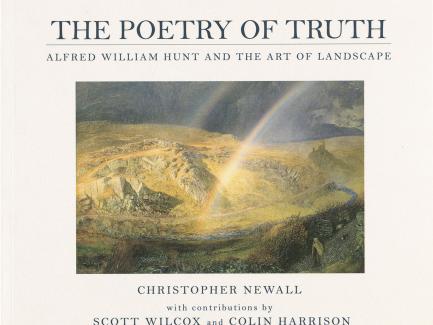Alfred William Hunt (1830–1896) was one of Britain’s most original landscape painters and watercolorists of the second half of the nineteenth century. Adopting the principle of “truth to nature” espoused by his friend and mentor John Ruskin, Hunt developed a highly individual form of Pre-Raphaelite observation of nature in the 1850s and early 1860s. He later moved away from the brilliant color and meticulous detail associated with Pre-Raphaelitism. Fearing that a literalness and narrowness of focus had descended on British landscape painting, he took a more atmospheric and poetic approach, inspired by—but never simply imitating—the work of J. M. W. Turner.
Organized by the Ashmolean Museum, University of Oxford, and the Yale Center for British Art, The Poetry of Truth: Alfred William Hunt and the Art of Landscape included approximately sixty watercolors, drawings, sketchbooks, and oil paintings. It was the first major exhibition devoted to Hunt since the memorial exhibitions that followed his death.
Venues
Yale Center for British Art: September 15–December 12, 2004
Ashmolean Museum, Oxford: January 26–April 3, 2005
View works from the collection included in this exhibition here.
Credits
The exhibition was curated by Christopher Newall, an independent art historian and expert on Hunt; Colin Harrison, Assistant Keeper in the Department of Western Art at the Ashmolean; and Scott Wilcox, Curator of Prints and Drawings at the Center.
Top image
Alfred William Hunt, Tynemouth Pier—Lighting the Lamps at Sundown (detail), 1868, watercolor, gouache, gum and scraping out, Yale Center for British Art, Paul Mellon Fund
Extended reading

The Poetry of Truth: Alfred William Hunt and the Art of Landscape
Written by Christopher Newall